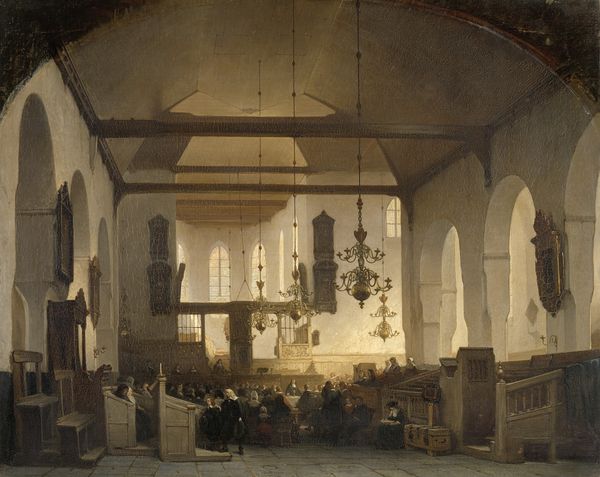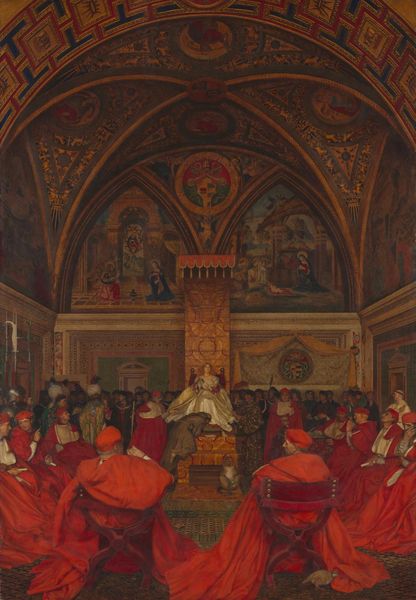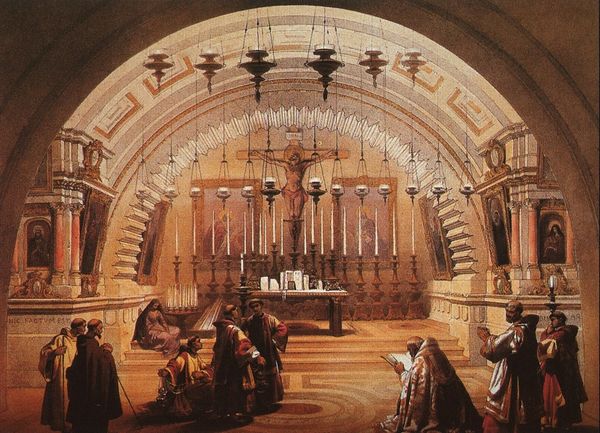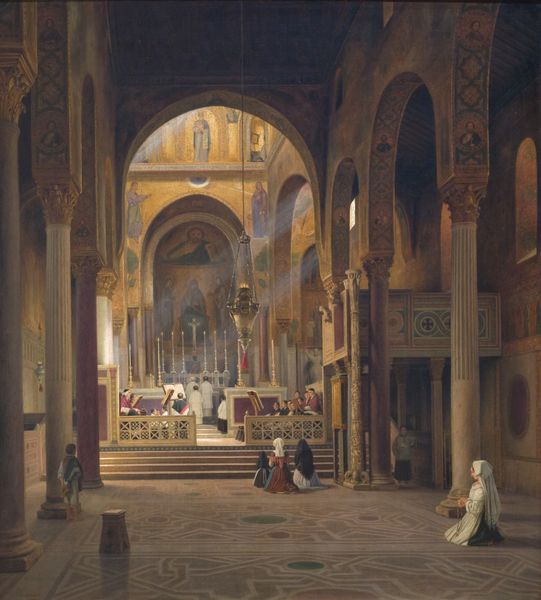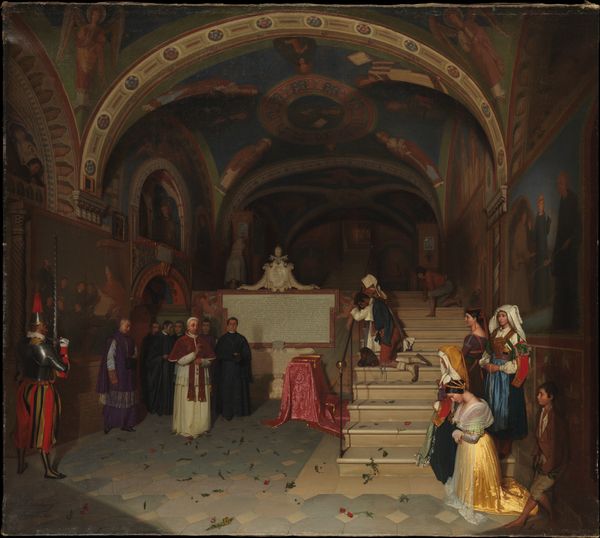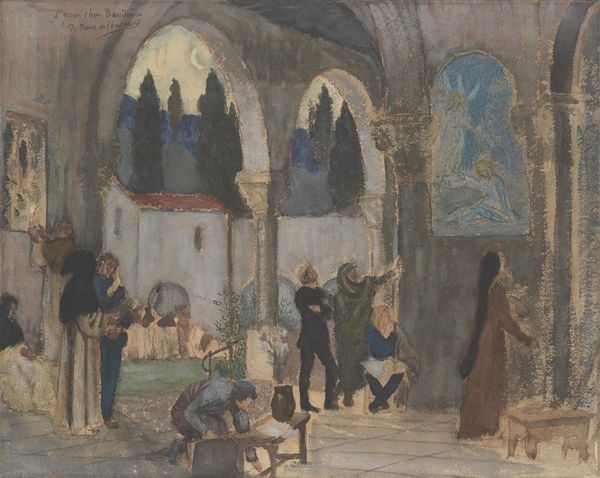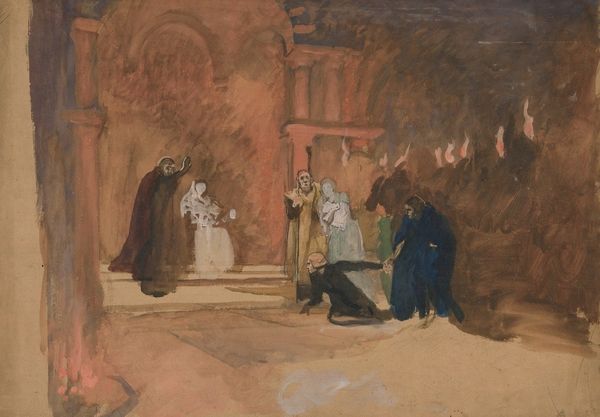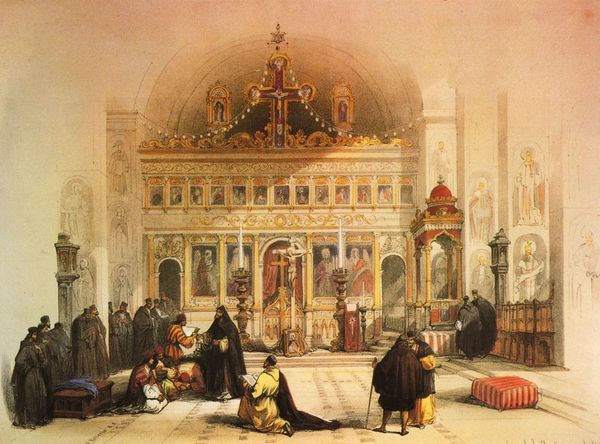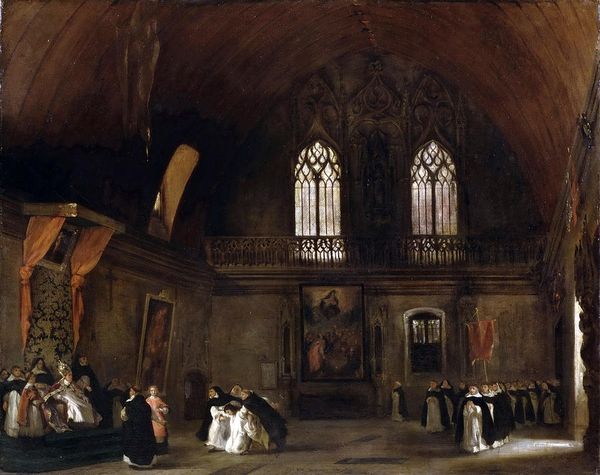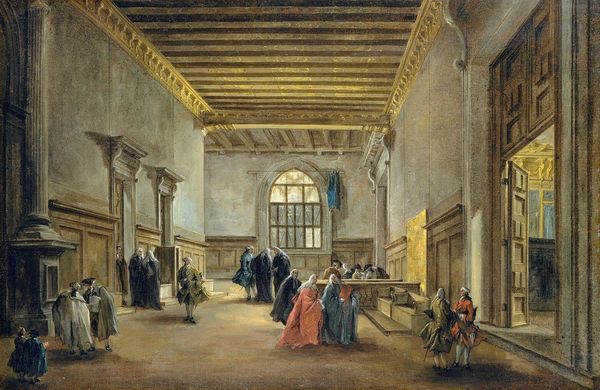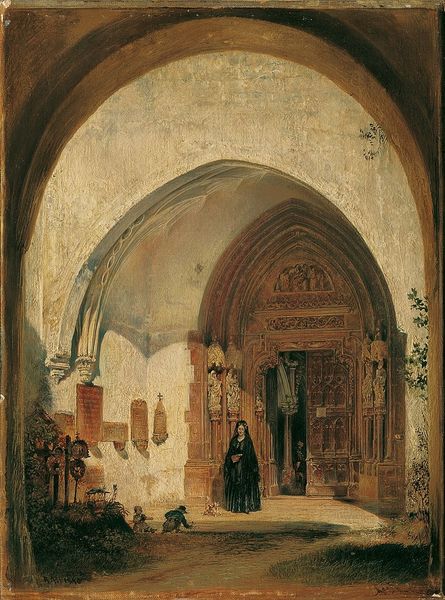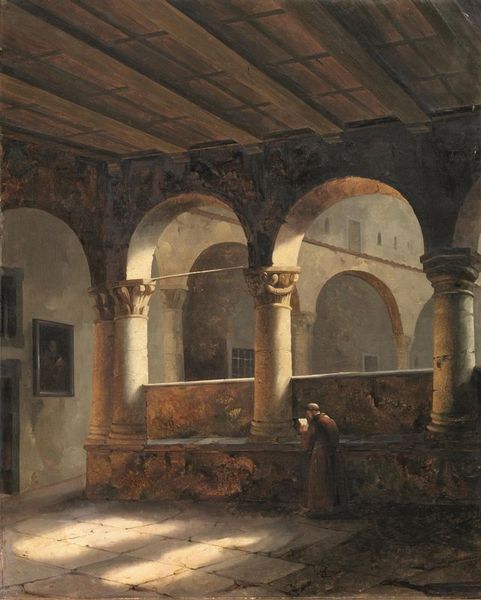
painting, oil-paint
#
painting
#
oil-paint
#
perspective
#
charcoal drawing
#
romanticism
#
painting painterly
#
genre-painting
#
history-painting
#
charcoal
#
watercolor
#
realism
Copyright: Public domain
Editor: Here we have Maxim Vorobiev's oil painting, "View of the Church of the Nativity in 1833." It's quite a hushed scene, almost reverent. What do you see in this piece, looking at it through the lens of history and cultural impact? Curator: This image encapsulates more than just a place of worship; it’s a window into 19th-century perceptions of the Holy Land and religious identity. The artist, Vorobiev, gives us a church interior, but what does that space mean in terms of power dynamics and cultural representation? Editor: So, the location itself carries weight? Curator: Absolutely. Consider the Church of the Nativity: built on the site believed to be Jesus' birthplace, it’s a focal point of pilgrimage and, historically, contention between different Christian denominations. How does Vorobiev’s depiction either reinforce or challenge existing power structures within these religious communities? Does the painting invite viewers to contemplate the politics embedded in religious heritage? Editor: I see what you mean. The painting isn't just documenting a place; it's prompting questions about who has access, who has a voice, and who shapes the narrative. Curator: Precisely. And think about the viewers for whom Vorobiev created this work. How might their social position have affected their view? How does the image contribute to or disrupt romanticized notions of religious experience, especially for those excluded due to gender, race, or class? The play of light and shadow, for instance – does it serve to elevate some figures while obscuring others, symbolically mirroring social hierarchies? Editor: That really reframes how I see the painting. I was initially focused on the aesthetic, but now I am wondering about who is privileged, both in the scene and by the act of its representation. Thanks! Curator: Indeed. Hopefully it has provoked you and our listeners to critically reassess inherited perceptions. It invites further consideration of the image as a contested cultural territory, mirroring the very historical site it depicts.
Comments
No comments
Be the first to comment and join the conversation on the ultimate creative platform.

